This is the fifth in a series of posts on the Sony a7RIII (and a7RII, for comparison) spatial processing that is invoked when you use a shutter speed of longer than 3.2 seconds. The series starts here.
I have been showing the effect of the Sony a7RIII’s, and, for comparison, the a7RII’s hot-pixel suppression algorithm (aka star-eater) by looking at the effect on dark-field noise in the frequency domain. While I think this is an elegant approach, it is not very direct, since we are looking at a side effect of the algorithm, rather than its intended result. If we look at histograms, we can see some outliers directly. Unfortunately, we will also see the effects of fixed-pattern read noise, which is exiled to the far left of the graph in the frequency domain.
What the hey, let’s give it a try.
This the full-frame histogram of a dark field at ISO 1000 and 3.2 seconds, with the a7RIII. The vertical scale is logarithmic; otherwise, the outliers would be down in the weeds.
Now let’s see what happens when we go to 4 seconds for the exposure:
Wow! The histogram sure narrows up.
Now we’ll do the same thing for the a7RII with release 3.0 firmware.
3.2 seconds:
4 seconds:
This looks very similar to the a7RIII plots, and I’m taking that as confirming evidence of the similarity of the a7RIII and a7RII star appetite.
Thanks to Rishi Sanyal for the files, and to the folks at RawDigger, for writing such a great tool.
[Added an hour or so later]
If we export the red raw channel from RawDigger, bring it into Matlab, pass a 25×25 pixel highpass filter kernel over it to get rid of a lot of the FPRN, the asymmetrical nature of the star-eater algorithm is more apparent. The plots are in the same order as above. Note the horizontal axis scaling changes between graphs. I should probably fix that if I’m going to be doing a lot of this.
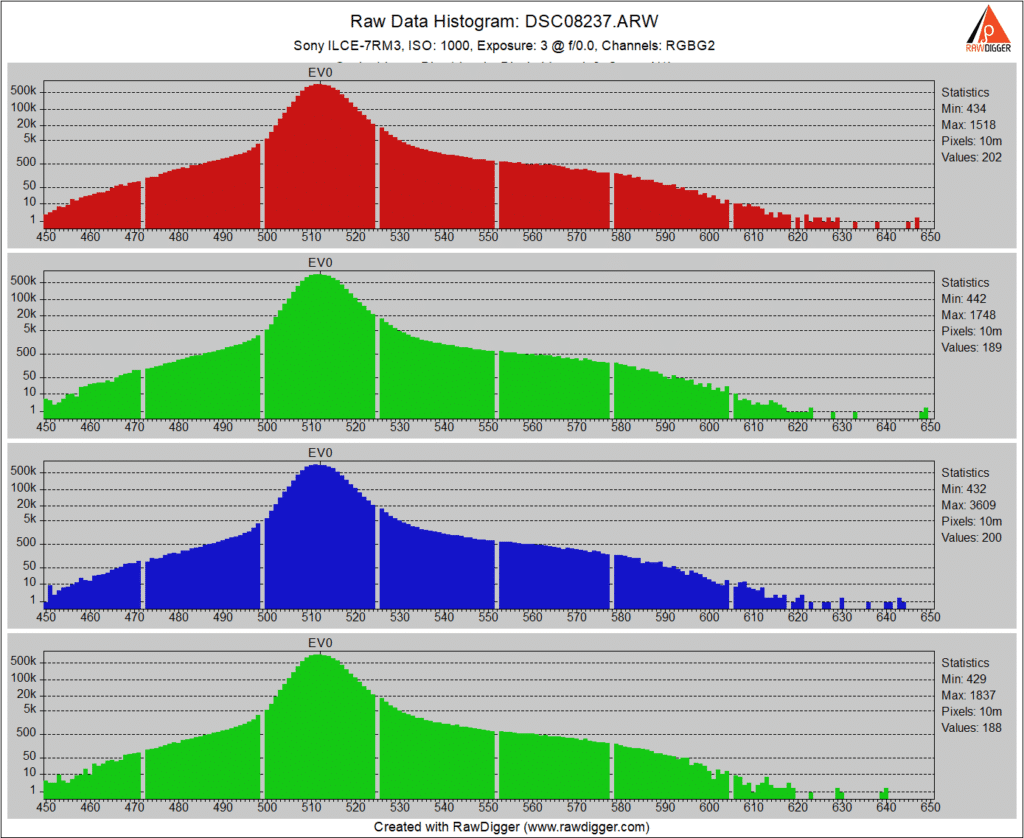
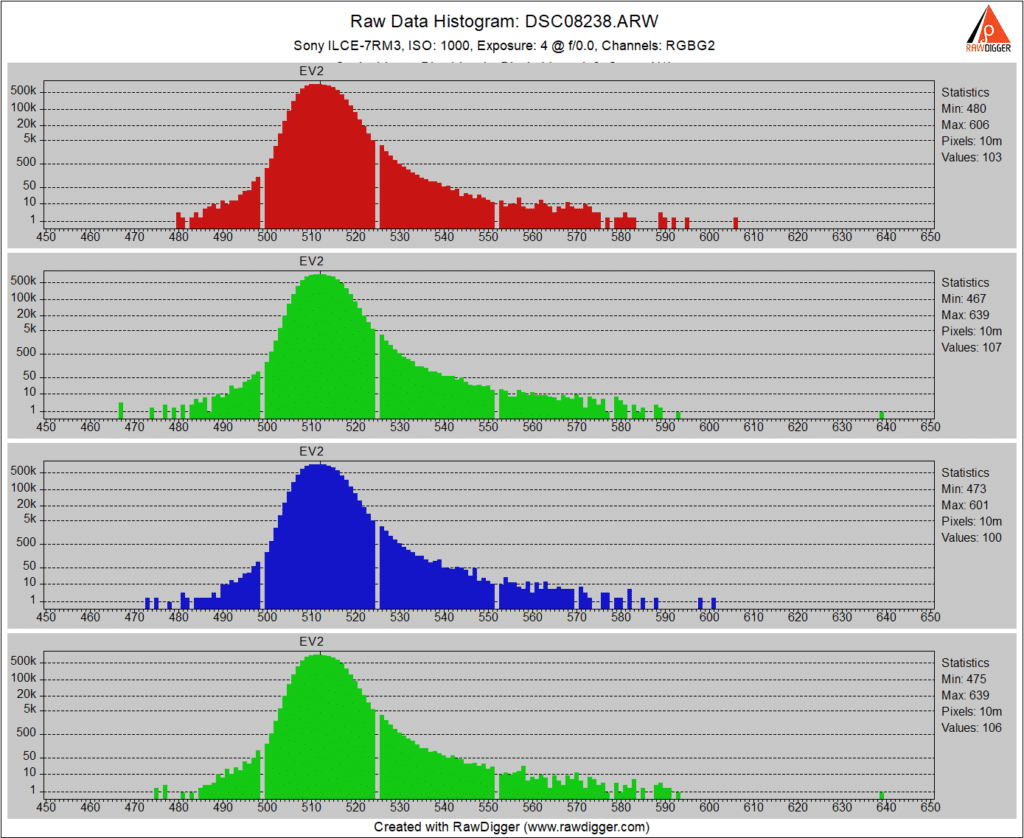
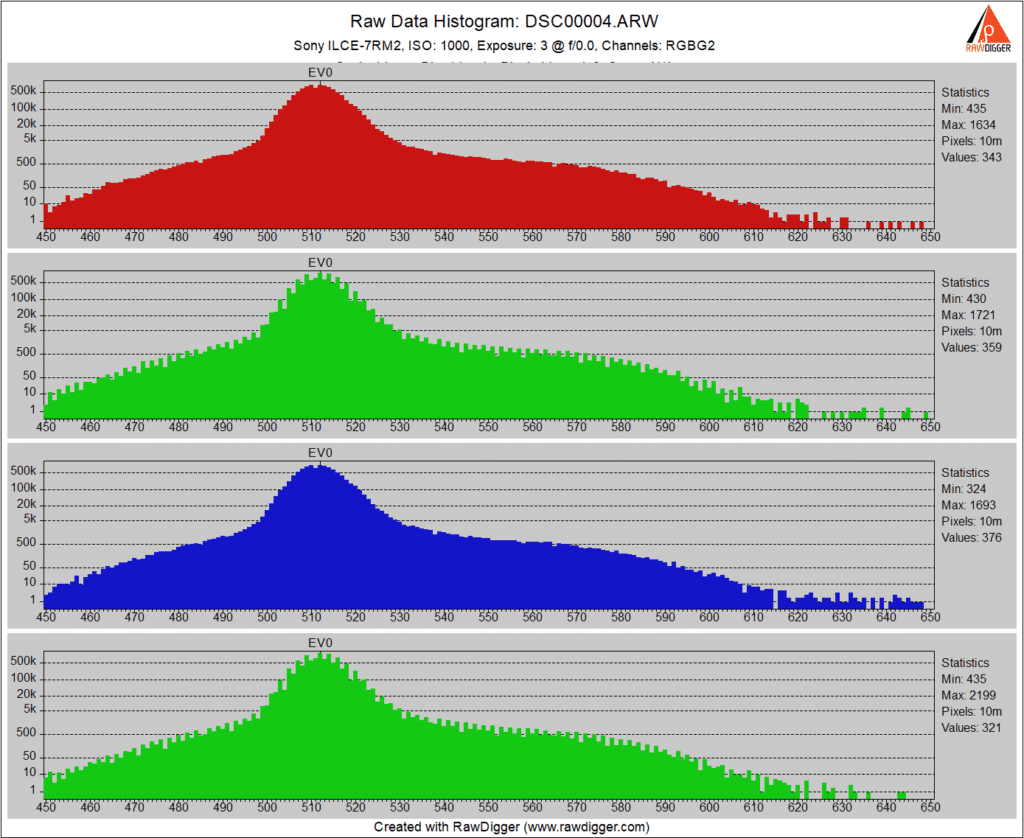
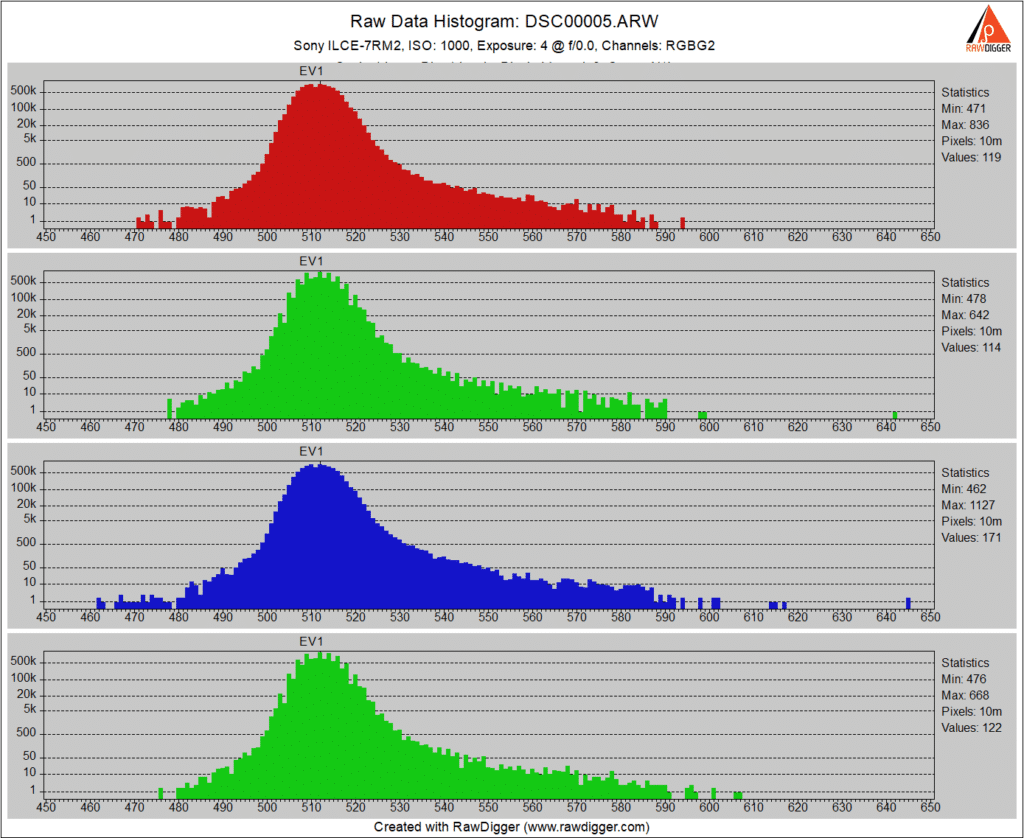
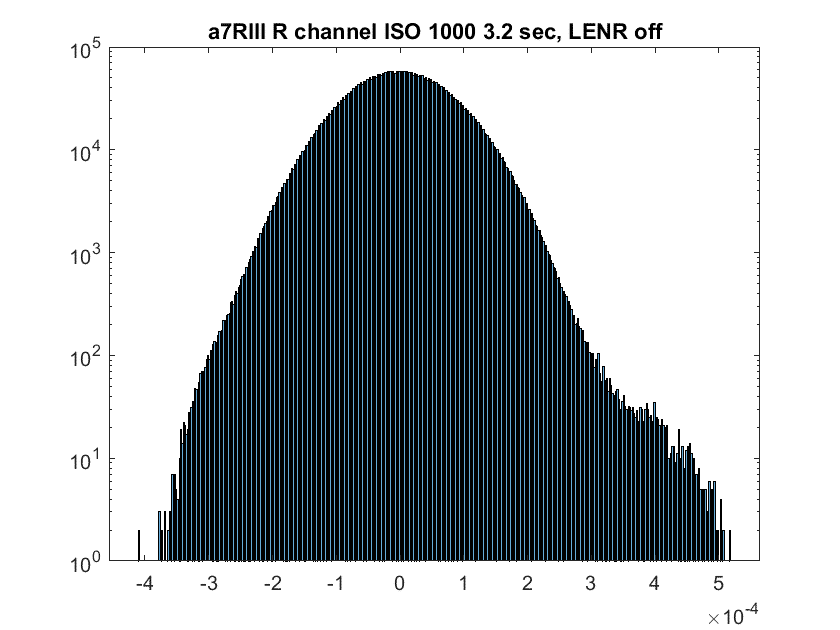
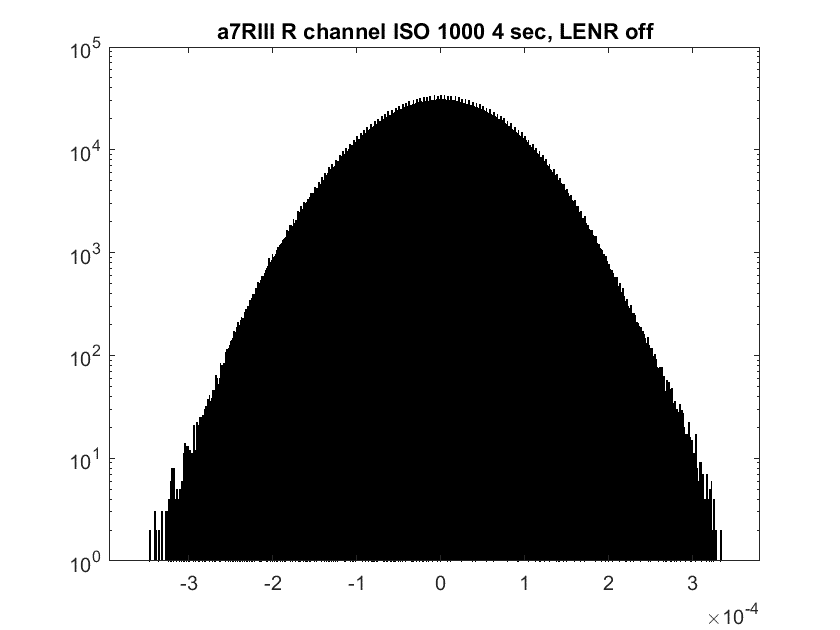
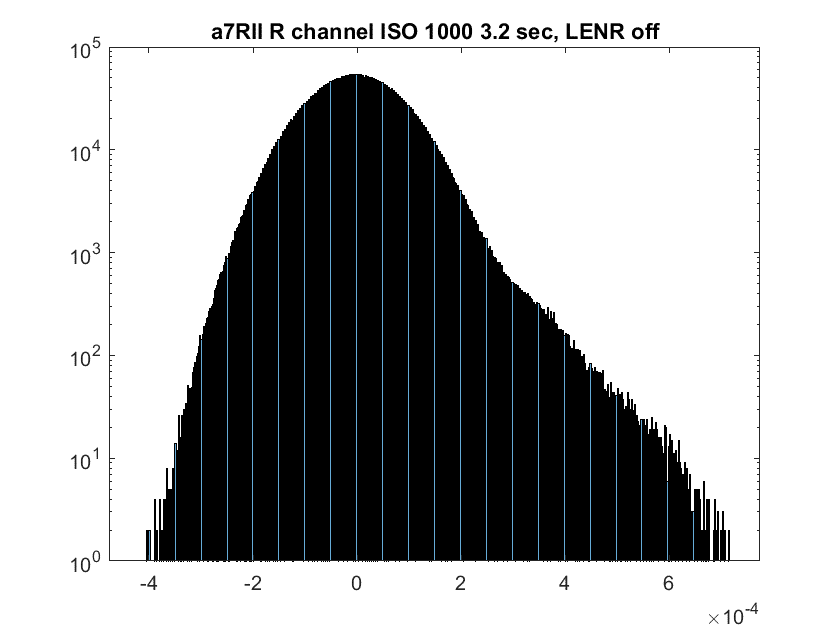
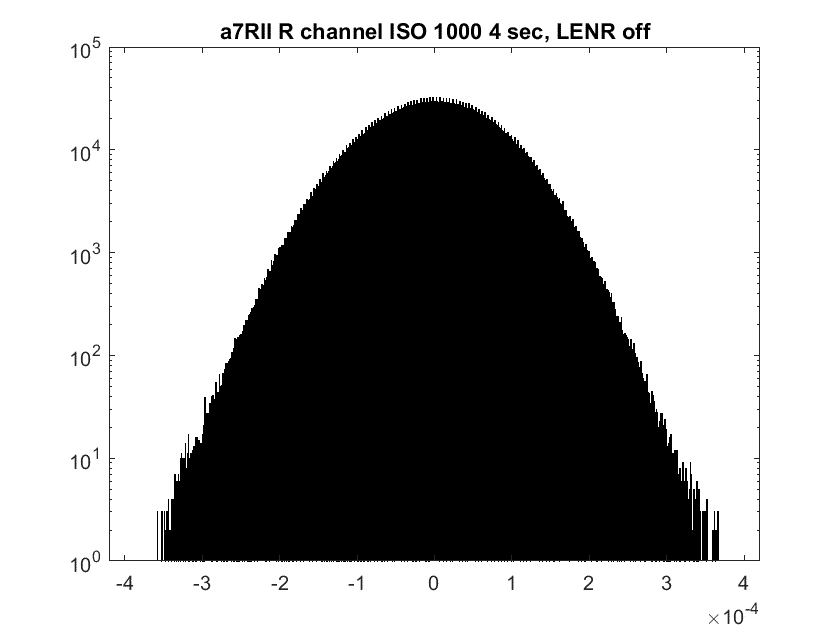
Jim did you do any of these measurements from files taken with LENR turned ON?
It occurs to me that since LENR is dark frame subtraction, Sony might not feel the need for spatial filtering as well…
I did. There’s not much difference.
Jim, I’d really like to know if the star-eater issue has been observed in the Sony A99ii. I have three A-mount Samyang lenses, which are great for astrophotography – and amazing as the A7Riii surely is, the A99ii is also a great camera… and I have a good collection of Minolta and Sony A-mount glass to use with it. Have you tested the A99ii – or do you know if any other astrophotographer has done so, for this issue?
I have no information on the a99II, not have I tested one. Srry.